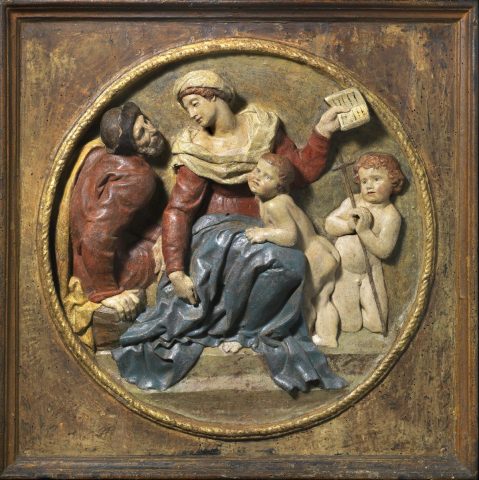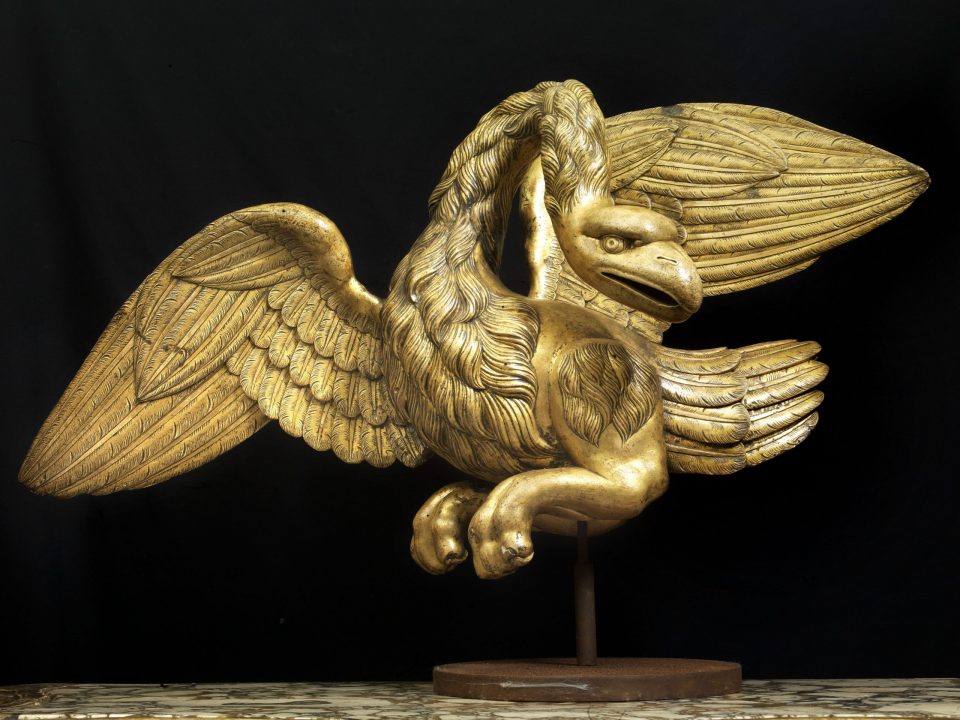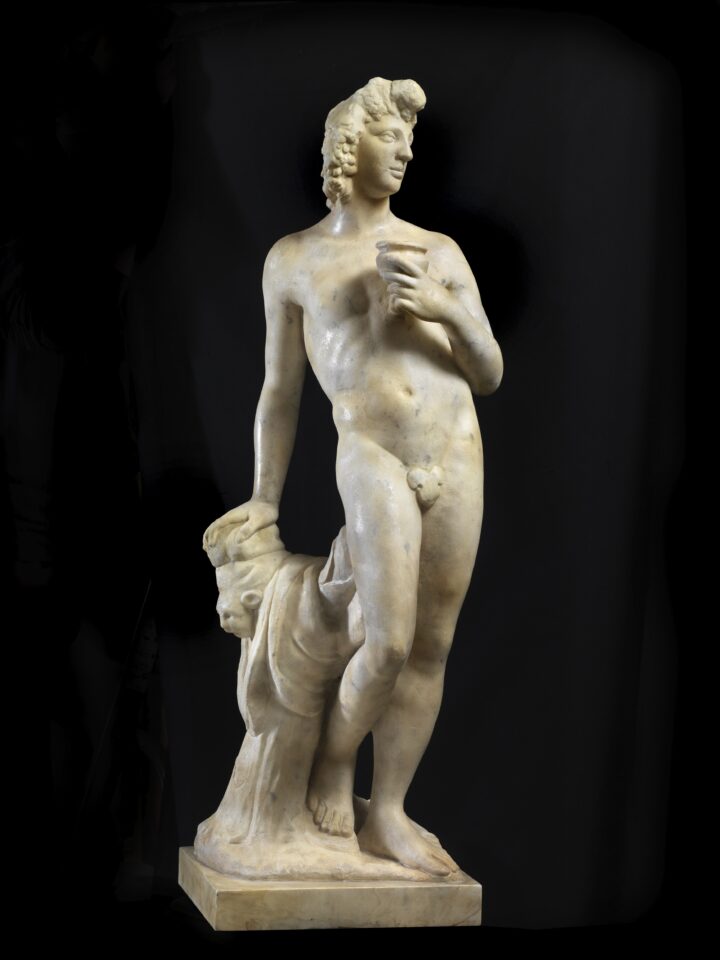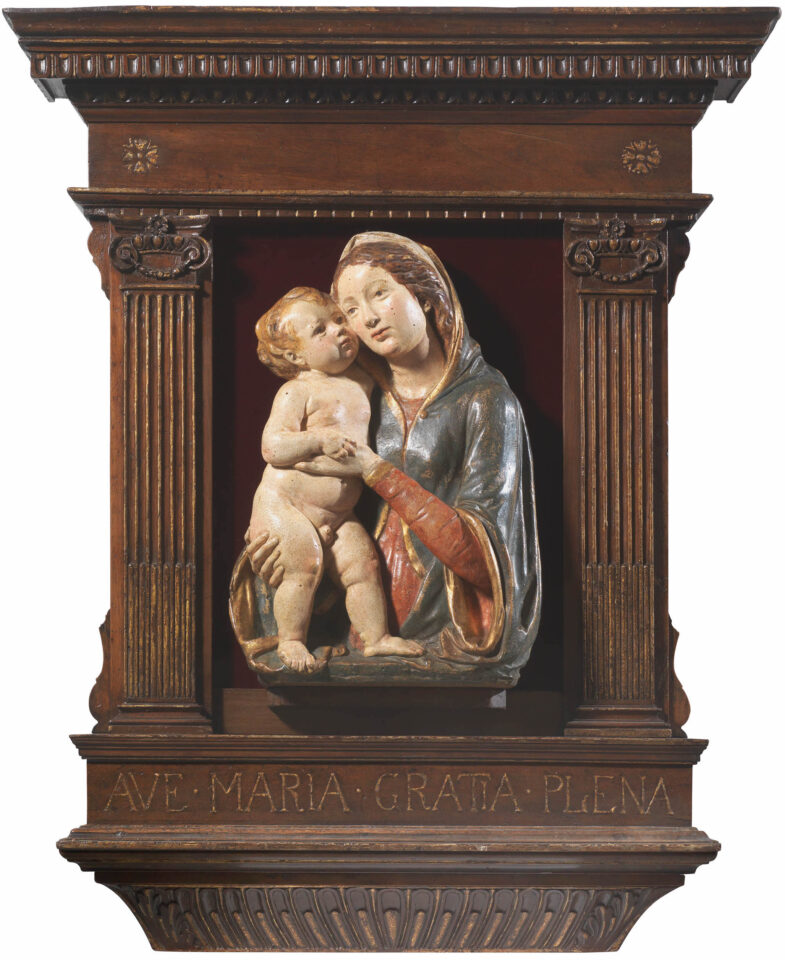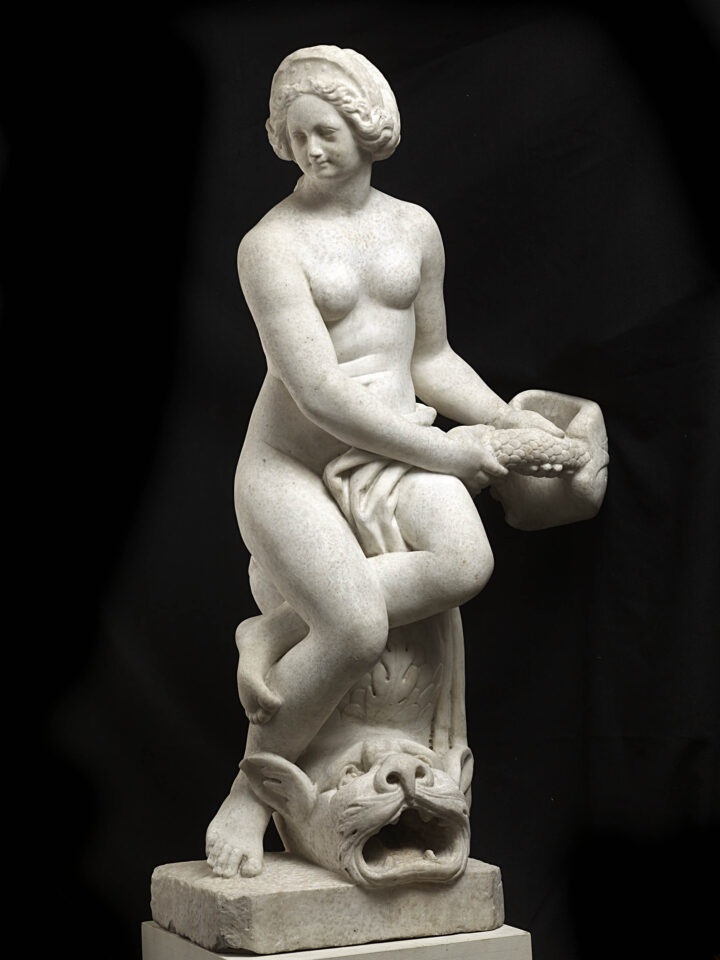JACOPO CARUCCI ALSO KNOW AS IL PONTORMO?
Pontorme, 1494- Florence, 1557
The Holy Family with the young John the Baptist
painted stucco, cm 55 diameter, cm 69×69 with frame
The evocative circular stucco composition presented here is still in its original frame, enriched on the corners by painted racemes, partly visible. A gilt rope encloses the tondo, characterized by rather prominent projections.
Behind this creation, as reconstructed by Giancarlo Gentilini in his analysis of the piece, there is an exquisite marble relief which has not yet been attributed with certainty. In spite of its superb quality, this tondo is still not sufficiently appreciated by critics, both for its location, in the sacristy of the Florentine church of Sant’Agata which has long been inaccessible, and for the problematic stylistic classification in the sculptural scene of the time. However, in 1966, in a monographic article wholly dedicated to it, an important German scholar convincingly tried to attribute it not to a sculptor but to one of the greatest Florentine painters of the sixteenth century, Pontormo.
Beside the indisputable stylistic similarities, highlighted by the many comparisons with drawings and paintings surely by the artist, the attribution to the Tuscan painter was supporter by additional observations: first of all, while we may not know of any other sculptures, Vasari mentions terracotta models made by Pontormo. In addition, in an inventory notation from 1557, a few months after the artist’s death, a “nostra donna di marmo di Jacopo da Pontormo” (“Our Lady in marble by Jacopo da Pontormo”), originally in the Duke’s apartment, was taken from the Medici’s Guardaroba (where the family treasures were stored) with the approval of his wife Eleanor of Toledo. As noticed by Gentilini, this information, as well as referencing a sculptural work – made with his own hands, or after his drawings or models – by Pontormo, makes it actually possible to identify the abovementioned marble work as the one that is now in the Florentine church, just as Von Holst suggested: in those years, the ruling House gifted a number of works to Sister Porzia, biological daughter of Duke Alessandro de’ Medici and abbess of the monastery of San Clemente, which, after its secularization in 1808 – as pointed out by Gentilini – became part of the convent of Sant’Agata.
If this marble piece can plausibly be ascribed, at least in its conception, to Pontormo, our stucco, faithful to the work by which it was inspired, could have been made in his workshop or by one of his followers. Gentilini reminds us of other stucco pieces with this iconography: one, which was found during the destruction of the old city center, is now kept at the Museo di San Marco and is also framed by a gilt rope; another one, in bad conditions, is preserved in the rectory of the parish of San Lorenzo in Vicchio di Rimaggio, near Bagno a Ripoli; and, lastly, another one was part of the collections of the Kaiser Friedrich Museum in Berlin. Bought in 1891 from the antique dealer Stefano Bardini, it was destroyed in the last World War.
Publications:
“Ein Marmorrelief von Pontormo”, edited by Christian von Holst, in “Jahrbuch der Berliner Museen”, 8 Bd. (1966), pp. 204-230.

